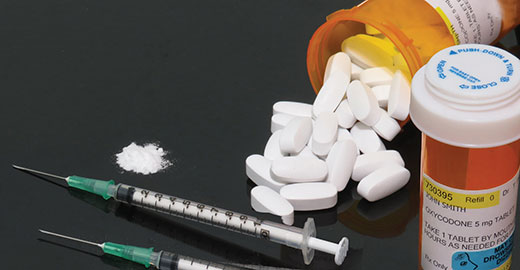There continues to be an opioid crisis in the United States that threatens the health, happiness, and future of millions of Americans. It has been called the greatest health crisis of the 21st century.
Walhalla resident and emergency room physician Edwin Leap stated, “It’s clear from the oxycontin crisis that there was a drive from the drug companies. Purdue (a large drug manufacturer in Connecticut) marketed oxycontin as if it were a less addictive option.”
As it has now been proven, oxycontin and other opioids are highly addictive.
Purdue, owned by the Sackler family, has been sued for billions of dollars. For over two years, the company has been in Chapter 11 bankruptcy. Now they are presenting a $10 billion plan to settle all the lawsuits with one sweep. Their proposal hinges on around $4.5 billion from the Sackler family. The company would emerge from bankruptcy into a company that uses profits from its earnings to fight the opioid crisis, likely producing another type of drug to combat opioid addiction. However, in mid-August, the Sackler family refused to support the legal settlement, including the $4.5 billion they were asked to pay. The family’s wealth is estimated to be over $11 billion, with most of it coming from oxycontin sales. A family member stated that they were planning to litigate in court rather than accept the terms of the settlement.
According to the U.S. Department of Health and Human Services, the opioid epidemic contributed to 70,630 overdose deaths in 2019 and more than 93,000 in 2020. According to Carrie Krieger, Pharm.D., “When opioid medications travel through your blood and attach to opioid receptors in your brain cells, the cells release signals that muffle your perception of pain and boost your feelings of pleasure. The feelings of pleasure that result from taking an opioid can make you want to continue experiencing those feelings, which may lead to addiction.”
Opioids are highly addictive, especially if they are used to treat chronic pain. According to Johns Hopkins Medicine, “Opioid use does not come without risks. Regular use can increase your tolerance and dependence, requiring higher and more frequent doses.”
Many opioids, like oxycontin, were approved by the Food and Drug Administration for short-term use (i.e., following major surgery). In 2001, the FDA was allegedly pressured by Purdue to expand the use of oxycontin for people with chronic pain. In the aftermath of that decision, opioid addiction grew.
Leap observed, “We have more limitations and monitoring of providers now, but there is still a lot of opioid abuse and an epidemic of opioid deaths. For that, I mostly blame heroin and especially fentanyl.” Prescription fentanyl is a synthetic opioid 80 to 100 times more powerful than morphine. Leap adds, “Fentanyl is pouring across our porous southern border, and it is pretty cheap to make. It ends up being used on its own or mixed with other drugs like heroin.”
Both heroin and fentanyl are readily available today on the illegal drug market, courtesy of inexpensive Mexican products. Leap said, “‘Big Pharma’ does some wonderful things, but a profit motive is always lurking.”
Bill Whitaker, in a CBS “60 Minutes” report, told the story of Alex Burlakoff, a sales representative at Insys Drug Company. He created a system of bribing doctors as much as $125,000 a year to boost opioid prescriptions. Burlakoff classified the payments as “speaker’s fees.” When Burlakoff was asked about the key to success in opioid sales, he replied, “The less of a conscience you had, the better.” He cooperated with prosecutors against his company’s executives in a plea deal and is now serving part of his 26-month sentence.
When Big Pharma — with its money to influence regulators — is combined with illegal drug manufacturers and illicit drug deals, the perfect storm is created. As hurting and broken people step into that world of addiction, the results are too often death. Leap said, “I suspect the opioid epidemic has a lot to do with despair, the loss of meaning and purpose along with the loss of financial hope, the loss of connections to others, and especially the loss of the anchors of faith. I feel confident that emotional, physical, and sexual trauma lies at the bottom of much of the opioid crisis.”

